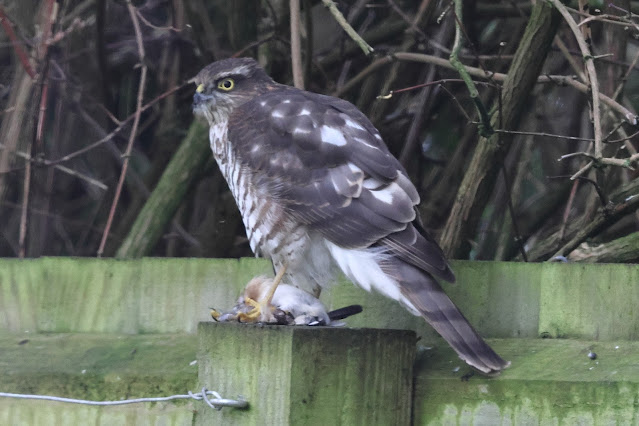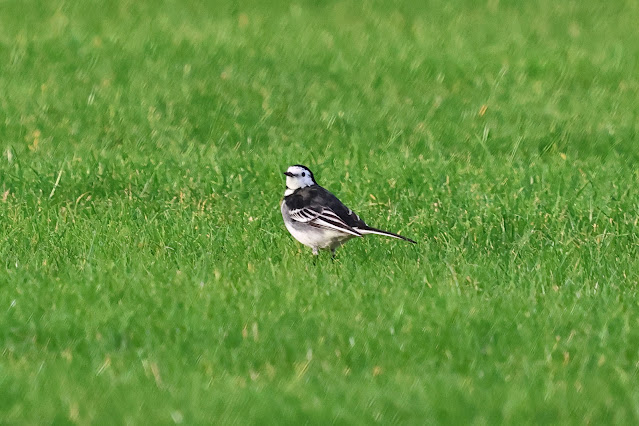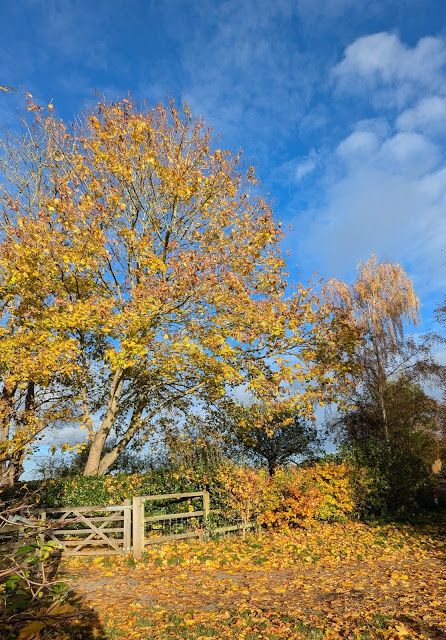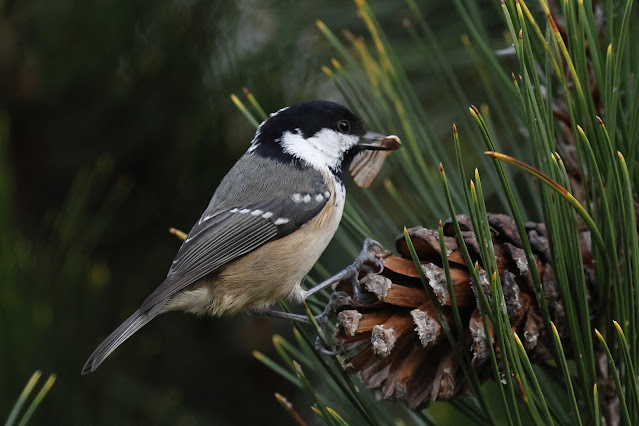October 2024
Amphibians
and Reptiles
Just two sightings of
a Common Frog in Lewis Cres around mid-month (see
blog).
Birds
A total of 46 species reported
this month in 262 records. A Redwing was seen at the end of the month,
and Blackbird returned to gardens in good numbers to fest on berries. A
few winter migrant Blackcap were also seen.
A Redwing was seen
on 30th on the LSA, and whilst Fieldfare have yet to be seen
in the parishes, they have been reported just north of here. The number of Blackbird
visiting some gardens rose noticeably this month, especially where there are berry-bearing
bushes.
A male Blackcap
was seen twice, on 29th and 31st, feeding on berries in a Lewis Cres garden. These
birds are likely to be migrants arriving here from eastern Europe, whereas the
birds that bred here in the summer will have migrated to southern Europe.
A few Chaffinch
were seen under feeders, after an absence of several months from some gardens. Goldfinch
were also noted in good numbers (up to 12), alongside a few Greenfinch. Several
Blue Tit and Great Tit were often seen, with 1-2 Coal Tit
appearing in several gardens, and small flocks of Long-tailed Tit spotted
along the ORC, Sluice Wood and in a few gardens.
One or two Jay were
seen regularly visiting several gardens, often collecting acorns. Goldcrest
were spotted at several locations, with Great Spotted Woodpecker and Green
Woodpecker spotted around Hall Farm and on Granta Park. Robin, Dunnock
and Wren were often reported, and a Song Thrush was spotted once
on Lewis Cres.
On Granta Park, two Little
Grebe remain on the lake, alongside a few Moorhen and up to 40 Mallard.
Eight Barnacle Goose were seen on the cricket field, as were a number
of Pied Wagtail (also spotted in a Moorefield garden). A Grey Heron
was reported on Bancroft Meadow, as well as flying over Lewis Cres, and interestingly,
two Egyptian Goose were seen on Grange Farm. A few Black-headed Gull
were spotted on GP, and small groups of gull, including Lesser Black-backed
Gull were seen in local fields.
Up to three Buzzard
were spotted at a number of sites, as were Red Kite with six being seen
over the LSA on 16th. A Kestrel and a Sparrowhawk were each reported
twice, and Tawny Owl continue to be heard occasionally.
Around a dozen Linnet
were seen on GP, as well as on the LSA, and Meadow Pipit were also
spotted on the LSA and along the ORC, where a group of Red-legged Partridge
were also seen. Collared Dove were reported just twice, and Stock
Dove just three times, whereas Feral Pigeon seem to be on the
increase.
Butterflies
and other Insects
Unsurprisingly, just
20 reports this month, these being mostly butterfly sightings.
Five butterfly species
were spotted in October. The majority of sightings were of Red Admiral, which
migrate south, back over the channel at this time of year, although some may
over-winter here. Several Large White were seen, as well as an
occasional Brimstone, and single reports of both Comma and Speckled
Wood, the latter likely to be from an unusual third brood of the year.
Total butterfly
reports received in October were: Red Admiral (7), Large White (3), Brimstone (2),
Comma (1), Speckled Wood (1), and unidentified ‘small white’ (2).
There were just two
reports of a Hawker dragonfly (6th and 16th), thought to be Southern
Hawker, although Migrant Hawker tend to be the predominant odonata
species late in the year.
Two reports of a Hummingbird
Hawkmoth in Lewis Cres on 7th and 18th.
Mammals
Fallow Deer – six
females/young and one well-antlered stag were seen along the ORC on 24th, and a
stag (likely the same one) was seen in a field off Chalky Road on 26th.
Hare
– one seen in Granta Park on 19th.
Hedgehog – evidence in a Bourn
Bridge Rd garden throughout October.
Muntjac – one in
a Cambridge Rd garden on 25th.
Field Vole –
one spotted in a garden compost heap on Lewis Cres on 11th.
Flora
and Fungi
A few fungi were
spotted on GP, and whilst identifying the species can be difficult, they were
thought to be Shaggy Inkcap, Fairy Inkcap, an Agaricus
species, a Mycena species, and a Trametes species
of bracket fungus (see
blog). A good-sized Giant
Puffball was also seen in Sluice Wood (see
blog).
Weather
The total rainfall was
54.5 mm, which is slightly below average. The highest temperature was 23.8
degrees C on the 16th and the lowest was minus 1.3 degrees C on the 11th. Temperatures
over the whole month were generally mild, and winds were mainly from a
southerly direction, so feeling very pleasant. As a result, there seem to be quite
a few wild flowers still in bloom, and the trees are starting to show their
autumnal colours (see
blog). The village was also given a lovely display of the Northern
Lights on 10th (see
blog).
Many thanks to all those who contributed
reports of their sightings for October 2024.
Tricia Cullimore, David & Gaynor Farrant, Andy
& Polly Merryweather, Joan Nevin, Barbara Phippen, Gill and Richard Smith, Maggie
Turner, Derek Turnidge.



















































